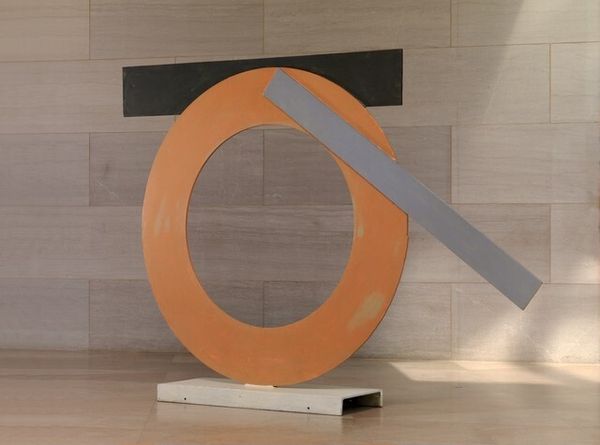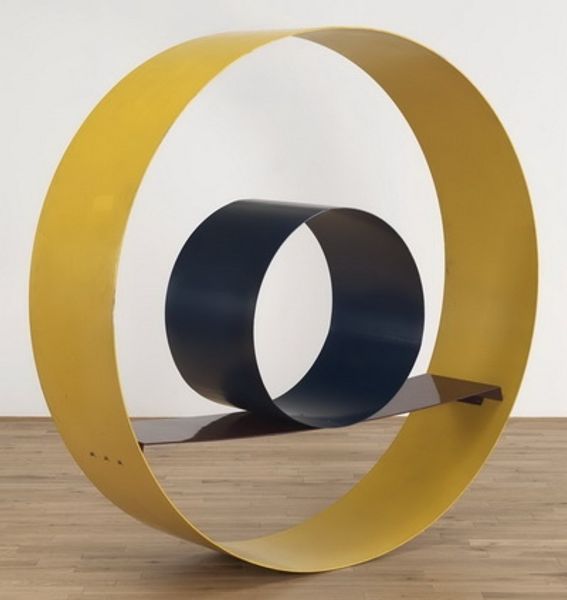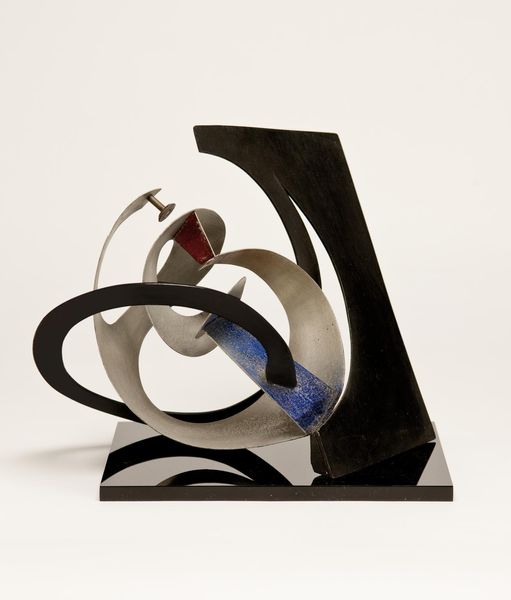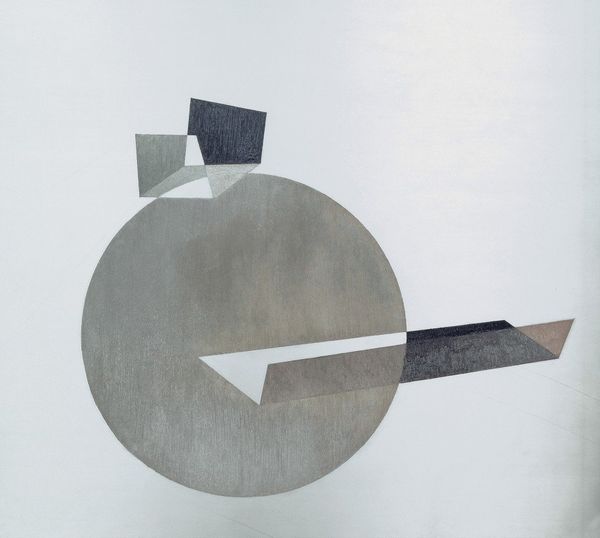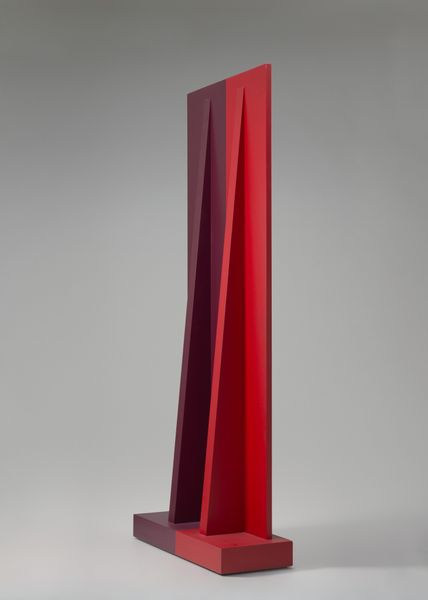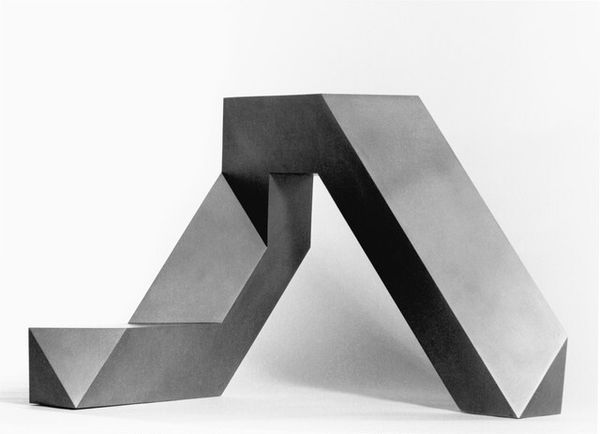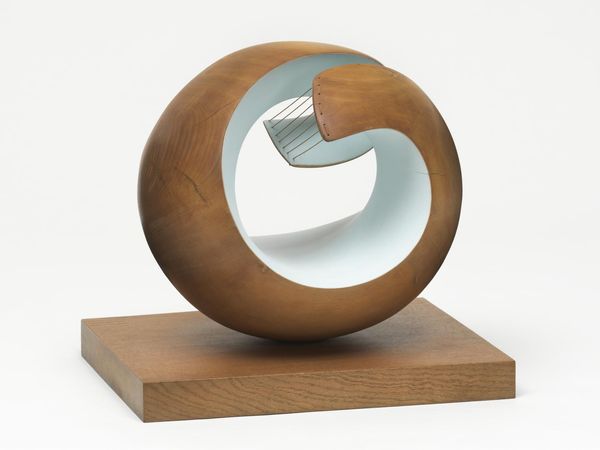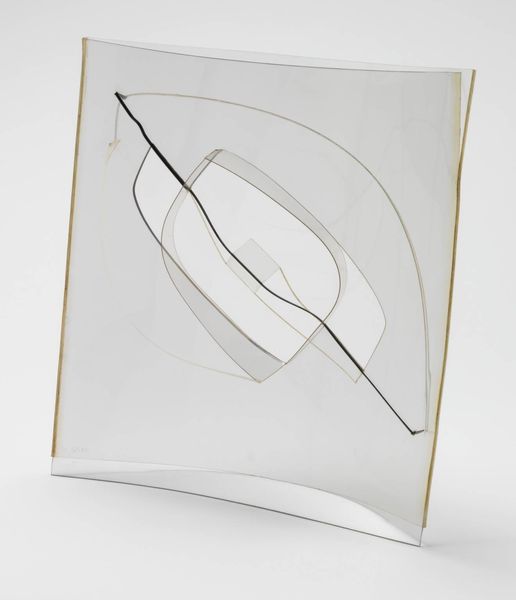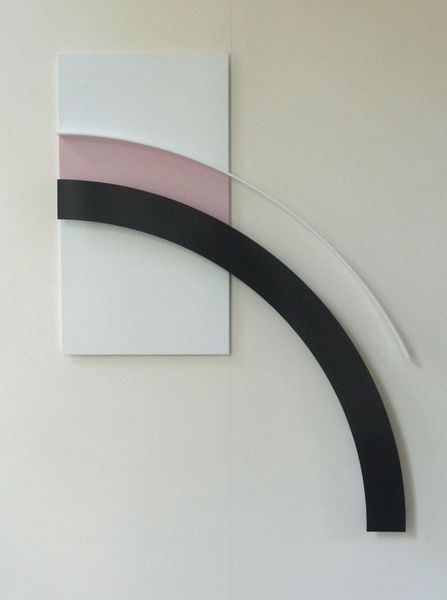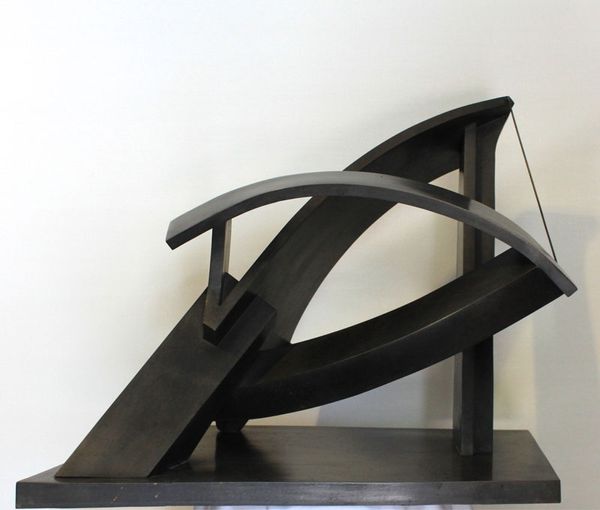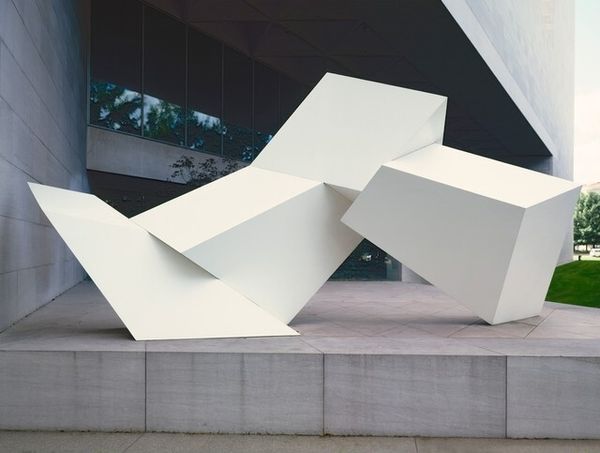
metal, sculpture
#
abstract-expressionism
#
minimalism
#
metal
#
form
#
geometric
#
sculpture
#
abstraction
#
line
Dimensions: overall: 267.9 x 281.2 x 60 cm (105 1/2 x 110 11/16 x 23 5/8 in.) gross weight: 820 lb. (371.95 kg)
Copyright: National Gallery of Art: CC0 1.0
Curator: David Smith’s sculpture, "Circle II," crafted in 1962, immediately strikes me with its almost playful energy, despite the rigid geometry. Editor: I see that, a vibrant red circle intersected by severe lines… it certainly has presence. Smith, of course, emerged in the wake of the Second World War; a historical turning point after which many artists explored new materials and scales as a direct response to shifting socio-political dynamics. How do you feel that background reflects into this sculpture? Curator: Considering that context, and Smith's earlier work using war materials, "Circle II" reads almost like a calculated rebellion against destruction. The bright color defies the somber mood, yet those hard edges – those rectangles slicing into the welcoming curve – speak to a world grappling with rigid structures of power and the fragmentation of identity. And then, how do these geometric forms challenge historical monumentality, reimagining form beyond tradition? Editor: He's consciously playing with abstraction here, a style gaining traction in American art spheres after the war. Remember the debates around abstract expressionism, particularly its perceived ties to American ideals during the Cold War? Minimalism too starts emerging, rejecting the emotionality, so how does “Circle II” play into those conflicting art historical discourses, negotiating a space beyond easy categorization? The use of industrial materials reflects the rising consumerism, yet its dedication to pure form sets up a contrast, and possibly critique, of capitalist materialism? Curator: Absolutely, and by reducing form to pure geometric shapes and eliminating the hand of the artist through industrial processes, Smith removes any obvious narrative, inviting the viewer to project their own meaning onto the work, maybe echoing the societal call for participation in democracy... Do you feel the use of open space allows room for critical conversations regarding society’s future at that time? Editor: Perhaps, but his work was embraced and circulated by the elite institutions. His use of these geometric forms, painted boldly, contributed to a new American visual vocabulary, tied inextricably to ideas of industrial innovation and freedom of expression, themes used to construct the Cold War narrative. Looking back, we can interpret Smith’s minimalist approach, his rejection of socialist realism for an individual, internal vocabulary, was a form of dissent and a reinforcement of the political status quo simultaneously. Curator: A fascinating duality to hold… It definitely pushes against simplified interpretations. Editor: Indeed. It serves as a reminder of how art constantly engages in silent dialogue with prevailing cultural and historical forces.
Comments
No comments
Be the first to comment and join the conversation on the ultimate creative platform.
